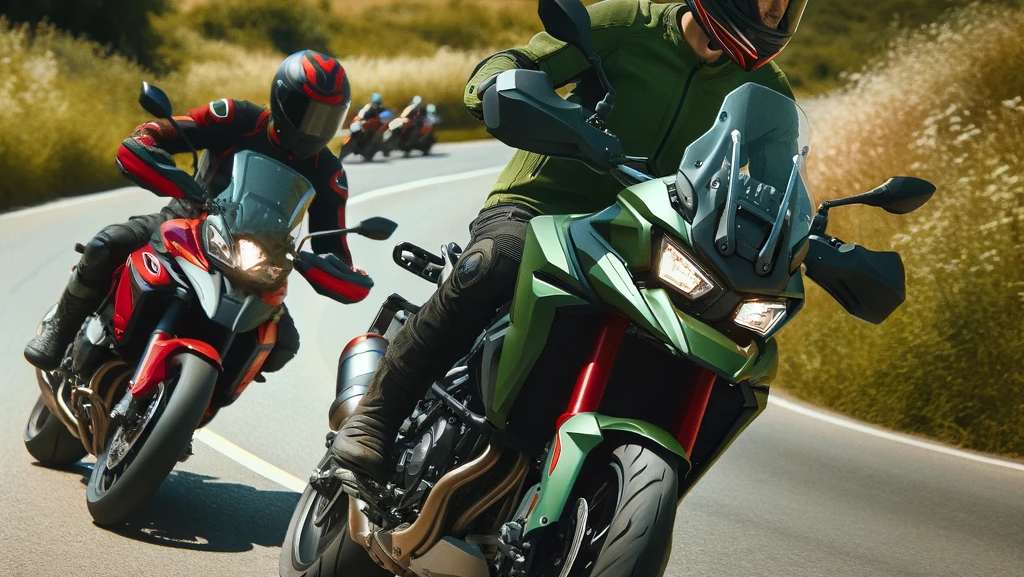Learning to ride a motorcycle is an exciting adventure, but it can also be a bit daunting for beginners. This guide will walk you through the essential steps and tips needed to get you started on two wheels safely and confidently. From choosing the right bike to understanding basic controls and riding techniques, we’ve got you covered.
Introduction
Riding a motorcycle offers a unique sense of freedom and adventure. Whether you’re drawn by the thrill of the open road or the practicality of commuting on two wheels, learning to ride requires patience, practice, and the right guidance. In this guide, we’ll break down the process into manageable steps to help you build your skills and confidence as a new rider.
Choosing the Right Motorcycle
Selecting the right motorcycle is a crucial first step. Here are some factors to consider:
- Bike Type: Different bikes serve different purposes. For beginners, standard or cruiser bikes are often recommended due to their balanced design and easy handling.
- Engine Size: Start with a bike that has a smaller engine (250cc to 500cc). These bikes are lighter and easier to handle, making them perfect for learning.
- Seat Height: Make sure you can comfortably reach the ground with both feet while seated. This helps with stability and confidence.
- Weight: Lighter bikes are easier to maneuver and control, especially at lower speeds.
Essential Gear for Riding
Safety should always be a priority when riding a motorcycle. Here’s a list of essential gear:
- Helmet: Invest in a high-quality, DOT-approved helmet to protect your head.
- Jacket: A motorcycle jacket with armor provides protection against abrasions and impacts.
- Gloves: Gloves offer protection and improve grip on the controls.
- Pants: Riding pants or jeans with reinforced padding can help protect your legs.
- Boots: Sturdy boots with ankle support and non-slip soles are essential.
Understanding Motorcycle Controls
Before you start riding, familiarize yourself with the basic controls of a motorcycle:
- Throttle: Located on the right handlebar, it controls the bike’s speed.
- Clutch: The lever on the left handlebar disengages the engine from the transmission.
- Brakes: The front brake lever is on the right handlebar, and the rear brake pedal is near your right foot.
- Gear Shifter: Found near your left foot, it allows you to change gears.
- Turn Signals and Horn: Usually found on the left handlebar, essential for communication and safety.
Basic Riding Skills
- Mounting and Dismounting: Always get on and off from the left side to avoid the hot exhaust pipe.
- Starting the Bike: With the bike in neutral, pull in the clutch and press the starter button.
- Using the Clutch and Throttle: Gradually release the clutch while gently rolling on the throttle to start moving.
- Shifting Gears: Use the gear shifter to move up and down through the gears. Always pull in the clutch when shifting.
- Braking: Use both brakes together for controlled stops. The front brake provides most of the stopping power.
- Turning: Slow down before a turn, look where you want to go, and gently lean into the turn.
Practice Exercises for Beginners
Practicing in a safe, controlled environment is key to building confidence. Here are some exercises to get you started:
- Starting and Stopping: Practice starting and stopping smoothly. Focus on using the clutch and brakes effectively.
- Slow Speed Maneuvers: Practice riding at slow speeds, making tight turns, and balancing the bike.
- Emergency Stops: Practice stopping quickly and safely using both brakes.
- Turning and Cornering: Work on your turning technique, ensuring you look through the turn and lean appropriately.
Safety Tips for New Riders
Staying safe on the road is paramount. Keep these tips in mind:
- Take a Motorcycle Safety Course: Enroll in a certified course to learn from experienced instructors.
- Stay Visible: Wear bright clothing and use reflective gear to increase your visibility to other drivers.
- Ride Defensively: Always be aware of your surroundings and anticipate the actions of other drivers.
- Avoid Distractions: Keep your focus on the road and avoid any distractions.
- Practice Regularly: Consistent practice helps build muscle memory and confidence.
Conclusion
Learning to ride a motorcycle is a rewarding journey that requires dedication and practice. By choosing the right bike, wearing the appropriate gear, and mastering basic riding skills, you’ll be well on your way to becoming a confident rider. Remember to always prioritize safety and never stop learning.

